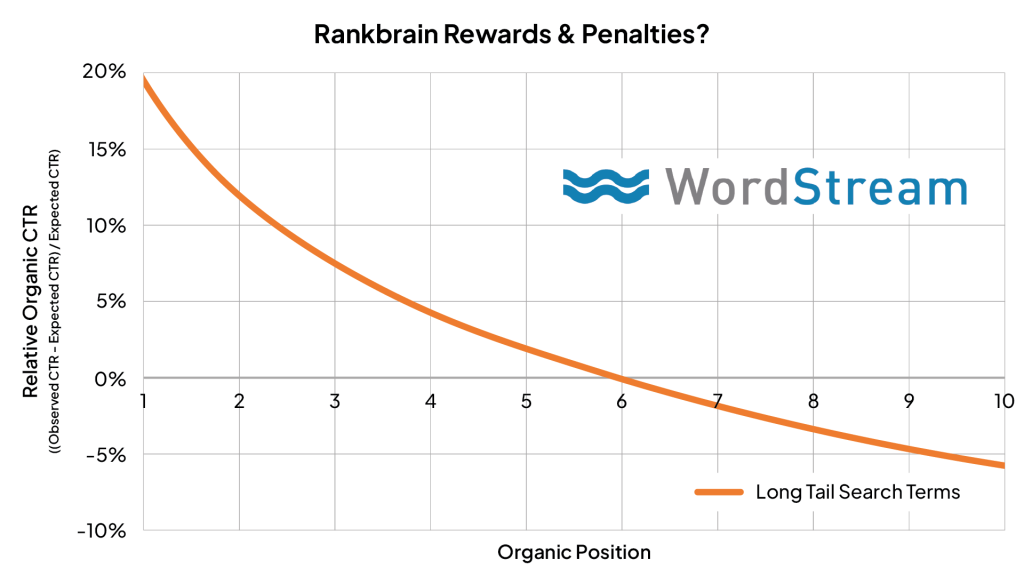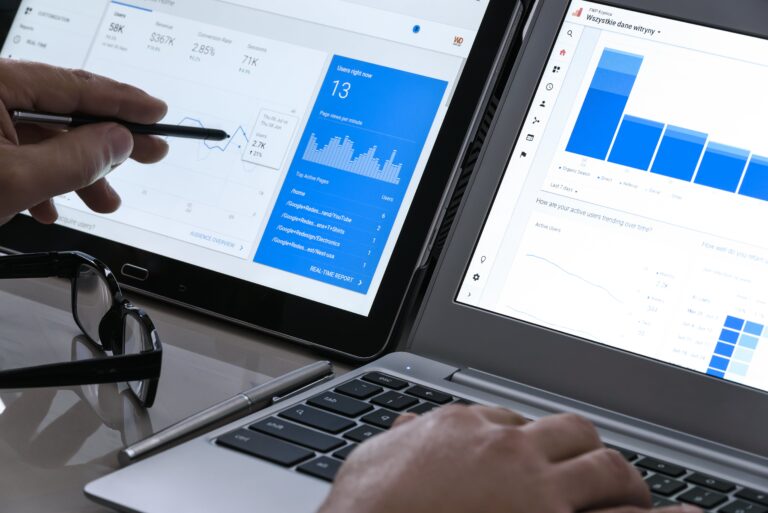So you have built a new website, launched it, but no one is visiting it? You’ve checked that the web pages’ content are all fully optimised and that the build is user friendly. The problem could be that you’re just not getting enough organic search traffic and enough user clicks to your website. This is where CTR meta – Click Through Rate Meta comes in, the front page of Google is the only place to be and now that you’re there, the next step is to get users to click through and visit your website and not only will this increase your organic traffic, it will help you to maintain those all important first page Google rankings.
Click-through-rate is often used in SEO – does a high organic click-through-rate help SEO? Is it important? If it is, how can we improve our website’s click-through-rate.
What exactly is ‘Organic-click-through-rate?
Organic-click-through-rate is simple, it’s calculated in metrics and tells you exactly how many people clicked through to your website out of the total number of people who saw it. In organic SEO this means how many people saw your search result and how many people clicked through to your page.
Click-through-rate is very important, imagine that thousands of people can see your search result, but no one clicks on it, it will be a totally wasted effort. CTR is similar to traffic generation and conversion rates, if you were to generate thousands of visitors and no one converts, again it’s a wasted effort. Investing in CTR meta optimisation can help to bring a return on investment to your overall SEO campaign.
Click-through-rates and SEO
Should you be the first SERP (search engine results page) and few people are clicking through, then you’re not optimised. Traffic is what counts in SEO (obviously conversions count as well) so this is where we see that click-through-rate-optimisation is a big part of search engine optimisation.
But, do pages with higher organic click-through-rates rank higher? One of the first ever studies on this, in 2014, involved data being collected from Google Webmaster Tools which showed that impressions, clicks and corresponding click-through-rates were all related when a link was in different positions. This research also presented that when the particular article was in SERP position one, the CTR was 56%.
Obviously, it’s not rocket science and people are always going to be more likely to click on the top ranked search engine result. Then there’s a big drop off when you go to position 3, 4, 5 and onwards, especially when you reach the second page. This has been seen time and time again quantitatively and also when it comes to visual data like heatmaps, which have shown how users’ attention drops off when getting towards the bottom of the page.
But is click-through-rate actually used as a ranking factor, for example, if something is ranking low on the results page, but gets a very high click-through-rate, would Google bump it up?
Larry Kim, Founder & CTO of WordStream, explained:
“The following graph takes the difference between an observed organic search CTR minus the expected CTR, to figure out if your page is beating — or being beaten by — the expected average CTR for a given organic position.
By only looking at the extent by which a keyword beats or is beaten by the predicted CTR, you are essentially isolating the natural relationship between CTR and ranking in order to get a better picture of what’s going on.

We found on average, that if you beat the expected CTR, then you’re far more likely to rank in more prominent positions. Failing to beat the expected CTR makes it more likely you’ll appear in positions 6–10.”
The bottom line being that – click-through-rate does matter when it comes to organic rankings, if you bear with the expected CTR then you’re in a good place, if you’re not then expect that your rankings will dip.
So if something is ranking low on the first page, but is receiving a high click-through-rate, that’s an indicator for Google that the content is what a search engine user or viewer is looking for.
How to improve organic click-through-rates
Optimising CTR meta is good for a number of reasons, it’s likely to improve your organic rankings and if people click on your search result, then that’s more traffic for you.
Increasing your organic click-through rate isn’t going to be quick and easy, there are digital teams across the world whose sole job is to work on CTR optimisation. New research is coming out all of the time as well as new updates to Google’s algorithm. However, with that being said, we’ll take a look at some of the most commonly known strategies and best practices for CTR meta.
Your meta title
 Meta title before
Meta title before
Meta title optimisation can be a hard skill to master, but there are a few principles that, when used, can provide you with an effective and concise headline for increased CTR.
- Use your main and secondary keywords
- Be relatable
- Make a statement
 Meta title after
Meta title after
Your meta description
While meta descriptions aren’t considered to be a ‘ranking factor’ a good meta description can increase click-through-rate, which as we know now, can improve rankings. A good meta description should draw readers to a website from the SERP, it is visible and a very important part of search engine optimisation and marketing.
 Meta description before
Meta description before  Meta description after
Meta description after
Optimised URLs
Structuring your URLs is another SEO skill, but easy to follow best practices can help you to create the perfect URL.
 URL before
URL before
- The more readable by a human being, the better
- Use keywords
- Match your URL to your meta title when you can
- Don’t include stopwords such as – and, but, or
- Don’t use punctuation characters unless its a ‘-’ to separate words
- Avoid using to many keywords, this will make your site look spammy
 URL after
URL after
The majority of this is common sense, but it’s important to remember that experimenting and trial and error is a good way to figure out what’s going to work for your website.
CTR Meta and Improving your Organic Click Through Rate – The Conclusion
Click-through-rate is important in getting the best SEO in more than one way, first you need people to click-through to your site when they see a SERP result, that’s the whole point of SEO, to get people to click through and engage with your content. So it’s clear to see that optimising CTR will have many benefits.
It also seems that Google does use organic click-through-rates as a ranking factor, SERP results that have a higher than expected CTR are known to improve and those with lower CTR to decline. Whatever the case, optimising CTR will bring results, especially when it’s carried out across an entire site.


